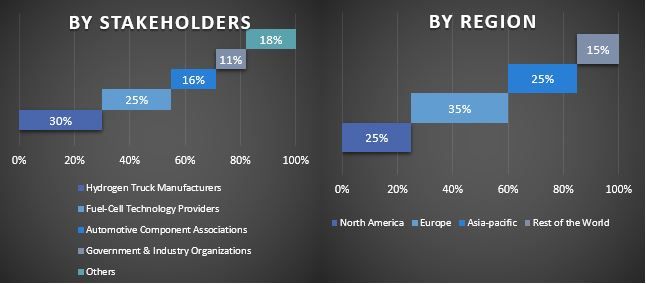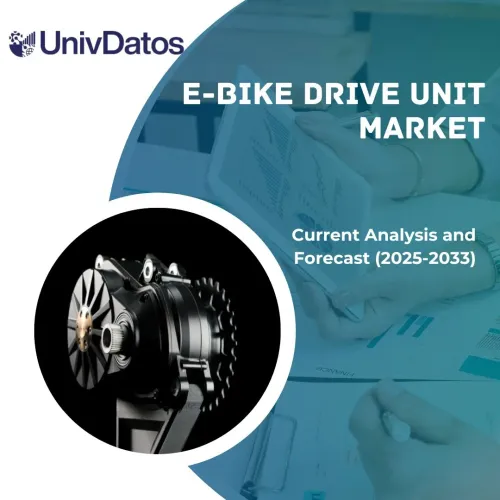- Home
- About Us
- Industry
- Services
- Reading
- Contact Us
Hydrogen Truck Market: Current Analysis and Forecast (2024-2032)
Emphasis on By Vehicle Type (Heavy Truck, Medium Truck and Light Truck); By Range (Below 400 km, Above 400 km), By Application (Municipal, Logistical), and Regions (North America (The US, Canada, Rest of North America), Europe (Germany, The UK, France, Italy, Spain, Rest of the Europe), Asia-pacific (China, Japan, India, Rest of the Asia-pacific), Rest of the World)
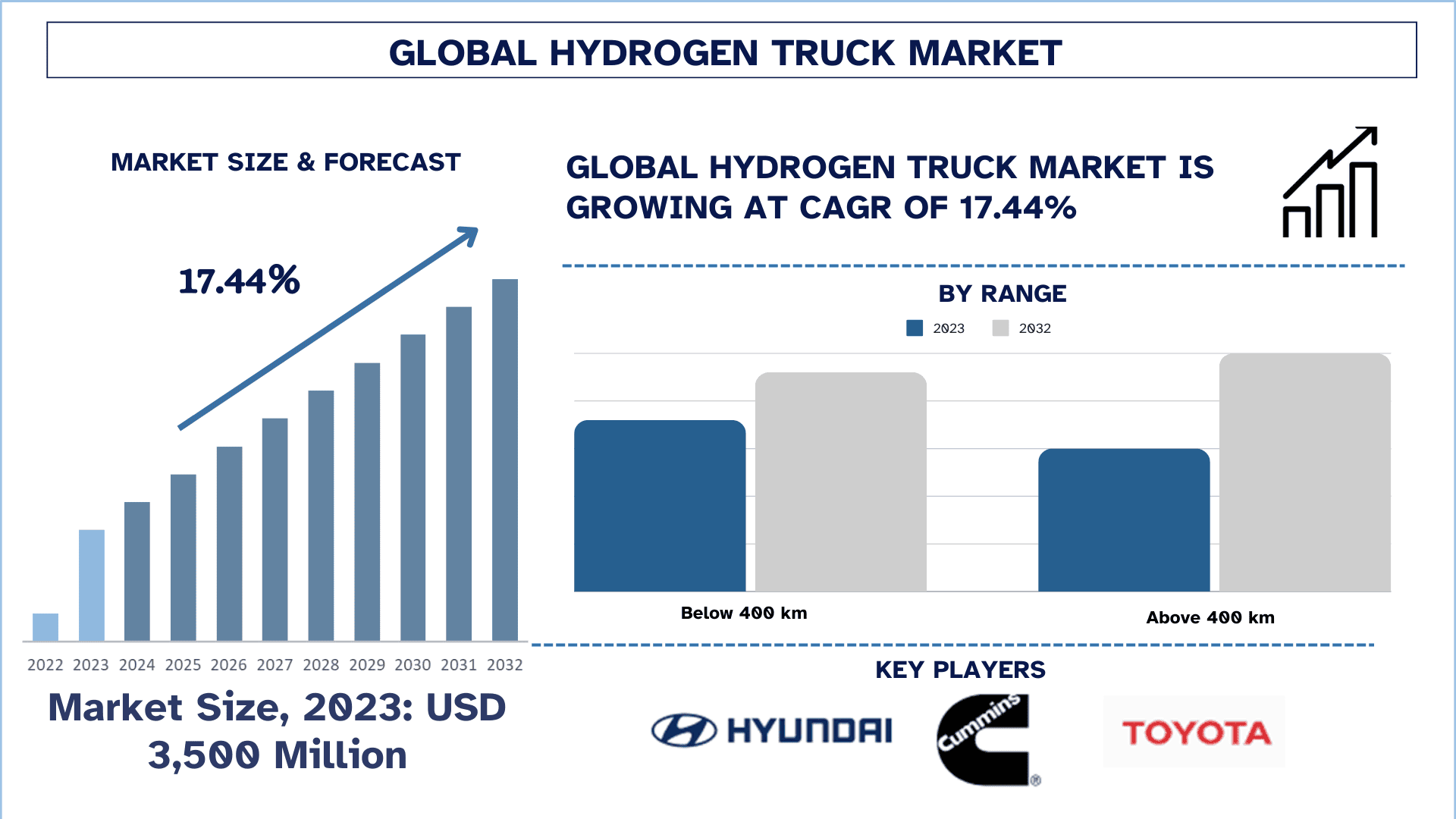
Global Hydrogen Truck Market Size & Forecast
The Global Hydrogen Truck market was valued at USD 3500 million in 2023 and is expected to grow at a strong CAGR of around 17.44% during the forecast period (2024-2032) owing to rising demand for clean transportation systems across the globe.
Global Hydrogen Truck Market Analysis
The need for a clean and sustainable transport network has been on the rise owing to which the global hydrogen truck market registered exceptional growth. Hydrogen trucks, which use a fuel cell, are able to provide an emission free solution to diesel trucks, therefore help in the reduction of emissions into the environment in the freight and logistics industry. In these vehicles only hydrogen is used as fuel, resulting in clean exhaust that consists of hot air mixed with water vapor, therefore this helps keep the environment clean and preserve the balance of gases in the atmosphere. As the negative consequences of a transport system based on fossil fuel resources become more and more pressing, hydrogen trucks appear to be one of the key factors in creating a balance in the face of environmental imperatives, for the segment of heavy-duty trucks manufacturers.
The Global Hydrogen Truck market was valued at USD 3500 million in 2023 and is expected to grow at a strong CAGR of around 17.44% during the forecast period (2024-2032). There are several reasons why the hydrogen trucking market is on the rise across different geographical regions. Firstly, governments and even the industries themselves have put regulations and emission standards in place which encourage the use of less polluting technologies. Most regions in Europe, North America, and certain parts of Asia have embraced emission reduction measures, hence the increased use of hydrogen fuel cells in the transportation sector, particularly the commercial vehicles. Due to the rising need for green energies and the upgrading of current technologies of making, storing and utilizing hydrogen, hydrogen trucks have become an alternative to diesel trucks. As the demand for logistics and transportation of goods increases, particularly in the regions that have high transport emissions, the demand for hydrogen trucks will also grow. The International Energy Agency (IEA) indicates that about 40% of road transport emissions globally are from heavy-duty vehicles, thus the need for hydrogen trucks to address such pollution.
The growth of the hydrogen economy will also be supported by more investments in hydrogen infrastructure such as refueling stations and production of green hydrogen. Besides, since most motor vehicle manufacturers and logistics companies are going green, the commandeering of hydrogen trucks into their fleets will be faster. Developing countries such as Asia, Africa, and south America, where transportation related pollution is already a menace, will welcome and integrate hydrogen trucks as part of green transport revolution. As the technology indurates and economies of scale sets in, the cost associated with hydrogen trucks will also depreciate making them ubiquitous in the global transport sector.
Global Hydrogen Truck Market Trends
This section discusses the key market trends that are influencing the various segments of the Global Hydrogen Truck Market as identified by our team of research experts.
Partnerships and Collaborations for Infrastructure Development
To boost the hydrogen truck market, it is critical first to scale the hydrogen infrastructure, hence the need for partnerships and collaborations. This has led to the formation of strategic partnerships among trailer manufacturers, energy companies, and state authorities for the purpose of setting up and operating a hydrogen refueling network. Some automakers, including Daimler and Volvo, have made common cause with Shell and Air Liquide and are busy constructing hydrogen fuel stations in many regions, particularly those located on strategic transport routes. These initiatives are also being promoted by governments who have constructed a system of grants and regulations For the development of fuel infrastructure along with the vehicle purchase, incentives were created. Innovative projects in this field are also focused on the reduction of production costs of hydrogen and on the improvement of the supply of hydrogen obtained by renewable based resources. Since these partnerships mitigate infrastructure challenges, the operations of hydrogen powered trucks, especially with regard to long journeys, will be enhanced thus fast tracking the transition to a zero-emission freight transport system.
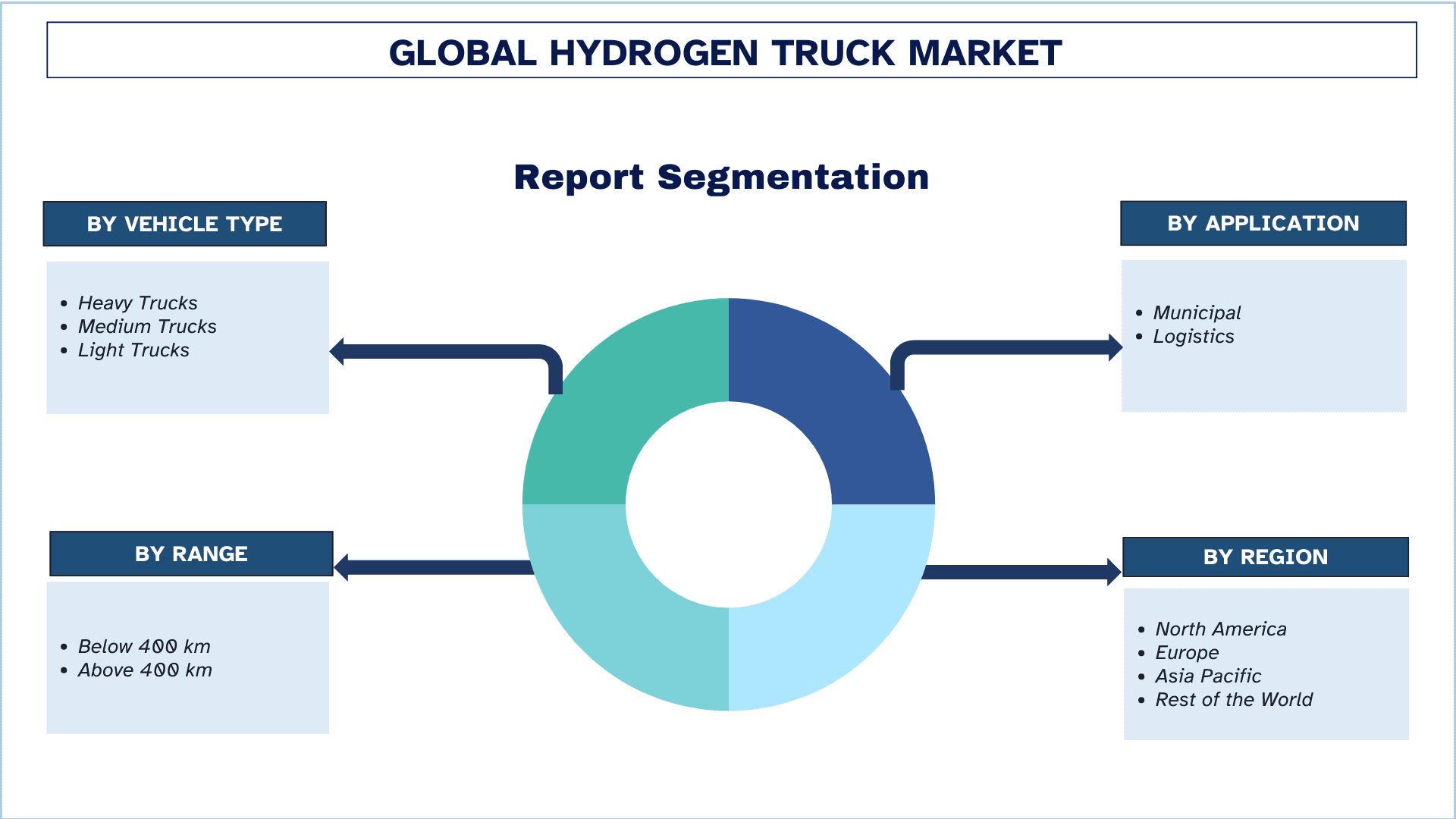
Europe is Expected to Hold Major Market Share During Forecast Period
Europe has held a notable share in the global hydrogen truck market, which can be attributed to strict environmental control norms, aggressive carbon reduction plans, and government intervention in terms of the development of clean energy technologies. Under the 2050 Review Strategy of the European Union which aimed to achieve a climate-neutral economy has already resulted in considerable investment in hydrogen development and fuel cell technology. Various countries such as Germany, France, and the Netherlands are taking the lead in enforcing and implementing such policies, which are aimed at promoting the usage of hydrogen in transport sector by employing measures such as offering subsidies and tax reliefs as well as constructing hydrogen refilling stations.
Heavy Duty Trucks in Europe moderate pricing strategy is inclined towards hydrogen fuel cells: considering the tougher emissions norms and the rising demand for clean transport solutions for logistic and freight activities. Companies like Daimler, Volvo, and MAN are designing trucks powered with hydrogen. These are already in use on test drives within the roads of Europe. In general, it can be asserted that the Europe will be prevailing in the hydrogen truck market with present and future trends as it is on the correct Path in achieving cleaner forms of transportation.
Considering the updates the region is anticipated to exhibit market expansion in the forecasted years i.e., 2024-2032.
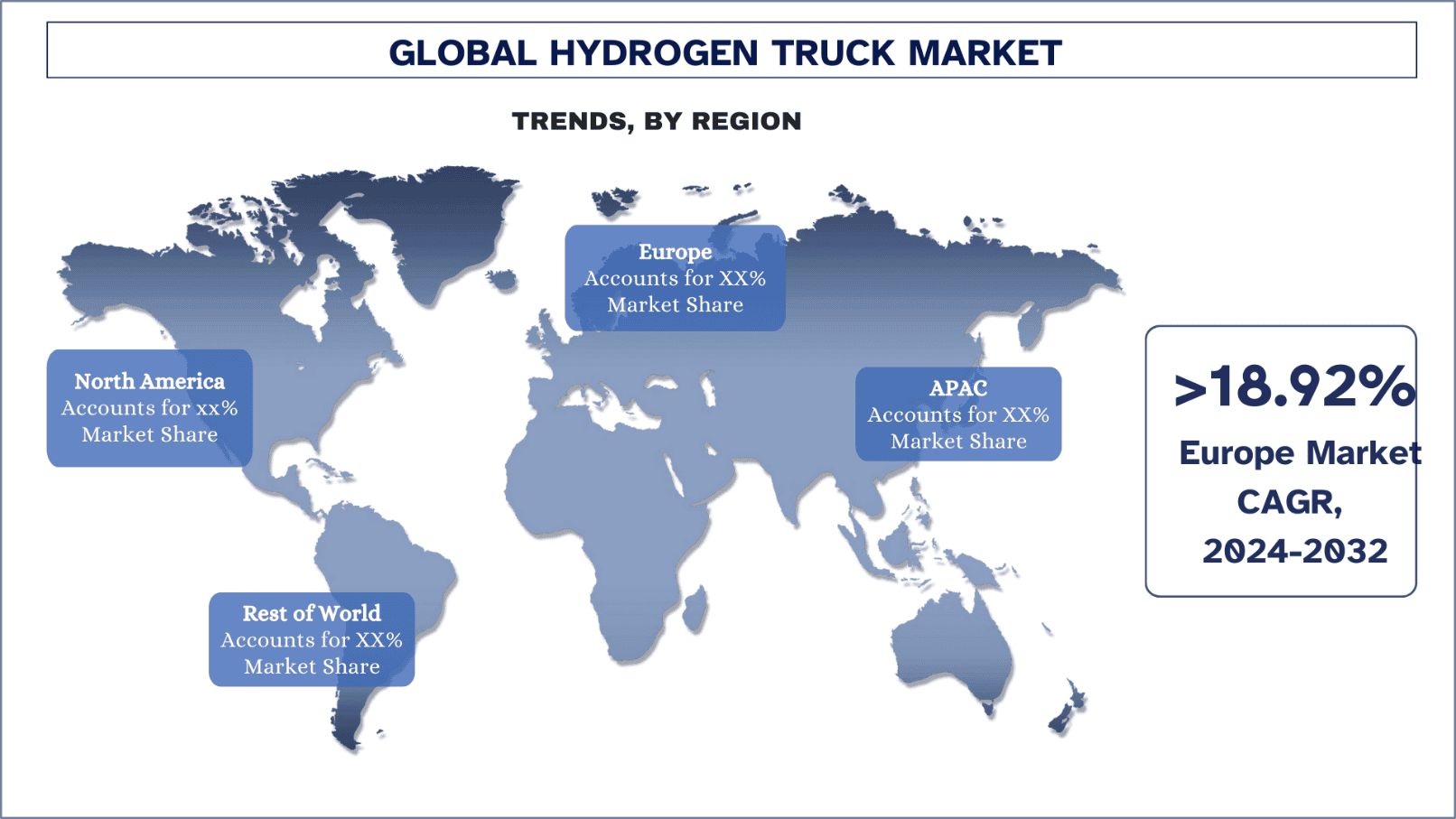
Global Hydrogen Truck Market Overview
The Global Hydrogen Truck market is competitive and fragmented, with the presence of several global and international market players. The key players are adopting different growth strategies to enhance their market presence, such as partnerships, agreements, collaborations, new product launches, geographical expansions, and mergers and acquisitions. Some of the major players operating in the market Cellcentric GmbH & Co. KG, Dongfeng Motor Corporation, Esoro AG, Hyzon Motors, Cummins Inc., Hyundai Motor Company, Kenworth Trucks, Nikola Corporation, Stellantis N.V., and Toyota.
Global Hydrogen Truck Market News
In 2024, Volvo announced to launch 600 km range hydrogen fuel truck to be launched in second half of 2025.
In 2023, EU Nations agreed to install hydrogen refueling stations in all of the major cities in Europe. Additionally, the plans is also to establish hydrogen refueling stations on every 200km on major routes.
Global Hydrogen Truck Market Report Coverage
Report Attribute | Details |
Base year | 2023 |
Forecast period | 2024-2032 |
Growth momentum | Accelerate at a CAGR of 17.44% |
Market size 2023 | USD 3500 million |
Regional analysis | North America, Europe, Asia-pacific, Rest of the World |
Major countries | The US, Canada, The UK, France, Germany, Italy, Spain, China, Japan, India |
Companies profiled | Cellcentric GmbH & Co. KG, Dongfeng Motor Corporation, Esoro AG, Hyzon Motors, Cummins Inc., Hyundai Motor Company, Kenworth Trucks, Nikola Corporation, Stellantis N.V., and Toyota. |
Report Scope | Market Trends, Drivers, and Restraints; Revenue Estimation and Forecast; Segmentation Analysis; Demand and Supply Side Analysis; Competitive Landscape; Company Profiling |
Segments Covered | By Vehicle Type By Range and By Application, By Region/Country |
Reasons to buy this report:
The study includes market sizing and forecasting analysis validated by authenticated key industry experts.
The report presents a quick review of overall industry performance at one glance.
The report covers an in-depth analysis of prominent industry peers with a primary focus on key business financials, product portfolios, expansion strategies, and recent developments.
Detailed examination of drivers, restraints, key trends, and opportunities prevailing in the industry.
The study comprehensively covers the market across different segments.
Deep dive regional level analysis of the industry.
Customization Options:
The Global Hydrogen Truck market can further be customized as per the requirement or any other market segment. Besides this, UMI understands that you may have your own business needs; hence, feel free to connect with us to get a report that completely suits your requirements.
Table of Content
Research Methodology for the Global Hydrogen Truck Market Analysis (2024-2032)
Analyzing the historical market, estimating the current market, and forecasting the future market of the Global Hydrogen Truck market were the three major steps undertaken to create and analyze the adoption of Global Hydrogen Truck in major regions globally. Exhaustive secondary research was conducted to collect the historical market numbers and estimate the current market size. Secondly, to validate these insights, numerous findings and assumptions were taken into consideration. Moreover, exhaustive primary interviews were also conducted with industry experts across the value chain of the Global Hydrogen Truck market. Post assumption and validation of market numbers through primary interviews, we employed a top-down/bottom-up approach to forecasting the complete market size. Thereafter, market breakdown and data triangulation methods were adopted to estimate and analyze the market size of segments and sub-segments of the industry. Detailed methodology is explained below:
Analysis of Historical Market Size
Step 1: In-Depth Study of Secondary Sources:
A detailed secondary study was conducted to obtain the historical market size of the Global Hydrogen Truck market through company internal sources such as annual reports & financial statements, performance presentations, press releases, etc., and external sources including journals, news & articles, government publications, competitor publications, sector reports, third-party database, and other credible publications.
Step 2: Market Segmentation:
After obtaining the historical market size of the Global Hydrogen Truck market, we conducted a detailed secondary analysis to gather historical market insights and share for different segments & sub-segments for major regions. Major segments are included in the report as By Vehicle Type By Range and By Application. Further regional/country-level analyses were conducted to evaluate the overall adoption of testing models in that region.
Step 3: Factor Analysis:
After acquiring the historical market size of different segments and sub-segments, we conducted a detailed factor analysis to estimate the current market size of the Global Hydrogen Truck market. Further, we conducted factor analysis using dependent and independent variables such as By Vehicle Type By Range and By Application in the Global Hydrogen Truck market. A thorough analysis was conducted for demand and supply-side scenarios considering top partnerships, mergers and acquisitions, business expansion, and product launches in the Global Hydrogen Truck market sector across the globe.
Current Market Size Estimate & Forecast
Current Market Sizing: Based on actionable insights from the above 3 steps, we arrived at the current market size, key players in the Global Hydrogen Truck market, and market shares of the segments. All the required percentage shares split and market breakdowns were determined using the above-mentioned secondary approach and verified through primary interviews.
Estimation & Forecasting: For market estimation and forecast, weights were assigned to different factors, including drivers & trends, restraints, and opportunities available for the stakeholders. After analyzing these factors, relevant forecasting techniques, i.e., the top-down/bottom-up approach, were applied to arrive at the market forecast for 2032 for different segments and sub-segments across the major markets globally. The research methodology adopted to estimate the market size encompasses:
The industry’s market size, in terms of revenue (USD) and the adoption rate of the Global Hydrogen Truck market across the major markets domestically
All percentage shares, splits, and breakdowns of market segments and sub-segments
Key players in the Global Hydrogen Truck market in terms of products offered. Also, the growth strategies adopted by these players to compete in the fast-growing market.
Market Size and Share Validation
Primary Research: In-depth interviews were conducted with the Key Opinion Leaders (KOLs), including Top Level Executives (CXO/VPs, Sales Head, Marketing Head, Operational Head, Regional Head, Country Head, etc.) across major regions. Primary findings were then summarized, and statistical analysis was performed to prove the stated hypothesis. Inputs from primary research were consolidated with secondary findings, hence turning information into actionable insights.
Split of Primary Participants in Different Regions
Market Engineering
The data triangulation technique was employed to complete the overall market estimation and to arrive at precise statistical numbers for each segment and sub-segment of the Global Hydrogen Truck market. Data was split into several segments and sub-segments after studying various parameters and trends By Vehicle Type, By Range, and By Application in the Global Hydrogen Truck market.
The main objective of the Global Hydrogen Truck Market Study
The current & future market trends of the Global Hydrogen Truck market were pinpointed in the study. Investors can gain strategic insights to base their discretion for investments on the qualitative and quantitative analysis performed in the study. Current and future market trends determined the overall attractiveness of the market at a regional level, providing a platform for the industrial participant to exploit the untapped market to benefit from a first-mover advantage. Other quantitative goals of the studies include:
Analyze the current and forecast market size of the Global Hydrogen Truck market in terms of value (USD). Also, analyze the current and forecast market size of different segments and sub-segments.
Segments in the study include areas By Vehicle Type, By Range, and By Application.
Define and analyze the regulatory framework for global Hydrogen Truck industry.
Analyze the value chain involved with the presence of various intermediaries, along with analyzing customer and competitor behaviors of the industry.
Analyze the current and forecast market size of the Global Hydrogen Truck market for the major regions.
Major countries of regions studied in the report include North America (The US, Canada, and Rest of North America), Europe (The UK, France, Germany, Italy, Spain, Rest of Europe), Asia-pacific (China, Japan, India, Rest of the Asia-pacific), Rest of the World
Company profiles of the Global Hydrogen Truck market and the growth strategies adopted by the market players to sustain in the fast-growing market.
Deep dive regional level analysis of the industry.
Frequently Asked Questions FAQs
Q1: What is the current market size and growth potential of the global hydrogen truck market?
The Global Hydrogen Truck market was valued at USD 3500 Million in 2023 and is expected to grow at a CAGR of 17.44% during the forecast period (2024-2032).
Q2: What is the driving factor for the growth of the global hydrogen truck market?
Government support along with hydrogen fueling infrastructure expansion across the developing regions are some of the key driving factors for growth.
Q3: Which segment has the largest share of the global hydrogen truck market by vehicle type?
The heavy truck segment has the largest share of the Global Hydrogen Truck market by vehicle type.
Q4: Which region will dominate the global hydrogen truck market?
Europe is expected to dominate the market during the forecast period.
Q5: Which regions dominate the global cycle Tourism market?
North America is expected to dominate the market during the forecast period.
Related Reports
Customers who bought this item also bought

